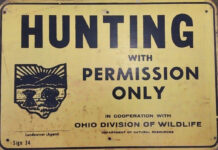
Today, we are going to time travel back to 2011, when I started writing the Flywheel articles for the Coolspring Power Museum’s website and local media. Gosh, it became fun as I finally wrote 86 monthly articles. Admittedly, some were not very good, but a few shined through as excellent. I will pick and choose, and try to entertain and inform you, our reader, of some of the better ones. This will be a new venture for both of us!
McKee Station
McKee Station was re-erected at CPM in 2011. It looks a lot better today, but the history and equipment remain the same. With excellent cooperation of the station owner, we dismantled the entire building and moved it to the museum.
History reveals that the first station was built in 1898, and the present one in 1939. There is no information of the first station, but one can guess as the oil boom passed, the station could well have been downsized.
It was located south of Clintonville, Pennsylvania, on a scenic back road — yes, there was what remained of a road back into the station, but it took an entire day with the chainsaw to get truck access. Part of the access road was located along a small creek and it appeared very soft. We traversed it several times until the last load out when we got extremely stuck, but that is another story.
McKee Station, probably named for the landowner, pumped crude oil. It was considered an intermediate gathering station. That means there were several small “local” stations that delivered crude oil from the producers to the two large holding tanks at McKee. McKee also had a suction pump to bring oil from producers directly.
Before McKee received oil, a gauger would measure the level of oil in the McKee tank. After the delivery, he would measure again. The levels were converted to 42-gallon barrels, and the producer was paid the current market price.
McKee then used its discharge pump to transfer the oil on to Kennerdell Station, a main line station that repeated the same process of gauging before transferring the crude oil to the refinery.
National Transit, a division of Standard Oil and based in Oil City, Pennsylvania, operated a huge spiderweb of pipelines, pumps and stations, all to get the oil safely to the refinery and be paid.
In the early days of oil, there were many small pipeline companies all in the business of collecting crude oil and sending it somewhere or other. Finally, they consolidated into United Pipe Line which improved oil management significantly.
In 1881, Standard Oil, which controlled most of the production and refining formed National Transit by merging United with several other small companies. The name came from National Storage, a huge tank facility on the east coast. Standard Oil now controlled essentially all the oil from the well to the product.
National Transit prospered and, in 1890, built a magnificent four-story, red brick structure in Oil City, Pennsylvania, to house its operations. In 1896, a buff brick annex was added.

Today, the Transit building is beautifully restored and open with many arts-and-crafts shops. The annex still has its unique water powered elevator, although not operational. It’s a bit of a thrill to stand in John Rockefeller’s spacious oak-paneled office and imagine what might have taken place.
At this time, Standard Oil controlled 95% of all oil produced in the U.S. — wow, what a monopoly! In 1911, the government broke up the monopoly, and many smaller concerns were formed.
National Transit had huge shops in Oil City, which are still in use as Electralloy Corp. Now, there were two divisions: National Transit Pipe Line Co. and National Transit Pump and Machine Co.
The pipeline part continued to 1964 when it was absorbed by Bradford Transit. In a few years, the vast pipeline system was history and the oil was moved in tank trucks. I was very fortunate to see many of the abandoned stations with all the equipment intact. McKee was one of these.
The pump and machine part built massive engines under the direction of John Klein, chief engineer. Until 1911, their engines were used only for their own purposes, so they could be as massive and intricate as Klein wanted. By 1915, their products, engines and pumps were made available to the general market, but continued with their unsurpassed quality. The shops were huge, and Transit built many large triple expanding steam engines for the Liberty Ships during World War II. They were finally absorbed by Worthington Pump and Machine.
Originally, McKee Station had one engine in the front center, with the suction and discharge pump belted to each side of the engine. We took the liberty to arrange it as many intermediate stations were with two engines and two pumps.
Station tour
Now let’s tour the station, and see our arrangement, what is there and where it came from.
There is a 10-by-18 bore and stroke Model 3 Klein engine. It was rated at 20 horsepower and could run all day. It drives a discharge pump and came from the Shippenville, Pennsylvania Station.

There is a 3 1/2-by-8 Transit discharge pump, which Transit noted as a vertical triplex power pump. Note that the pump has the clutch and not the engine. This was their usual practice, and they used Med-Art clutches made in St. Louis. These pumps were extremely heavy and could sustain pumping 2,000 psi all day long. This pump came from the Brandon Station.

On the other side of the station, we view the suction side. There is a 9-by-12 Klein engine rated at 10 hp. Note the disc crankshaft. We date this engine at 1898. It’s interesting to note that Klein made three different sized engines: the 12-by-24 bore and stroke, 40 hp; the 10-by-18, 20 hp, and the 9-by-12, 10 hp. It was a great line of heavy duty, functional and beautiful gas engines. Production was about 250 total.

There is also a 4-by-6-inch triplex suction pump. Note the lighter construction. They were used to provide a vacuum on the input oil line to the station. This pump actually came from McKee. In front of this pump sits a Transit water pump used for cooling larger engines.

During our tour of McKee Station, we have learned a bit about oil production and movement. It must have been a hectic time.











